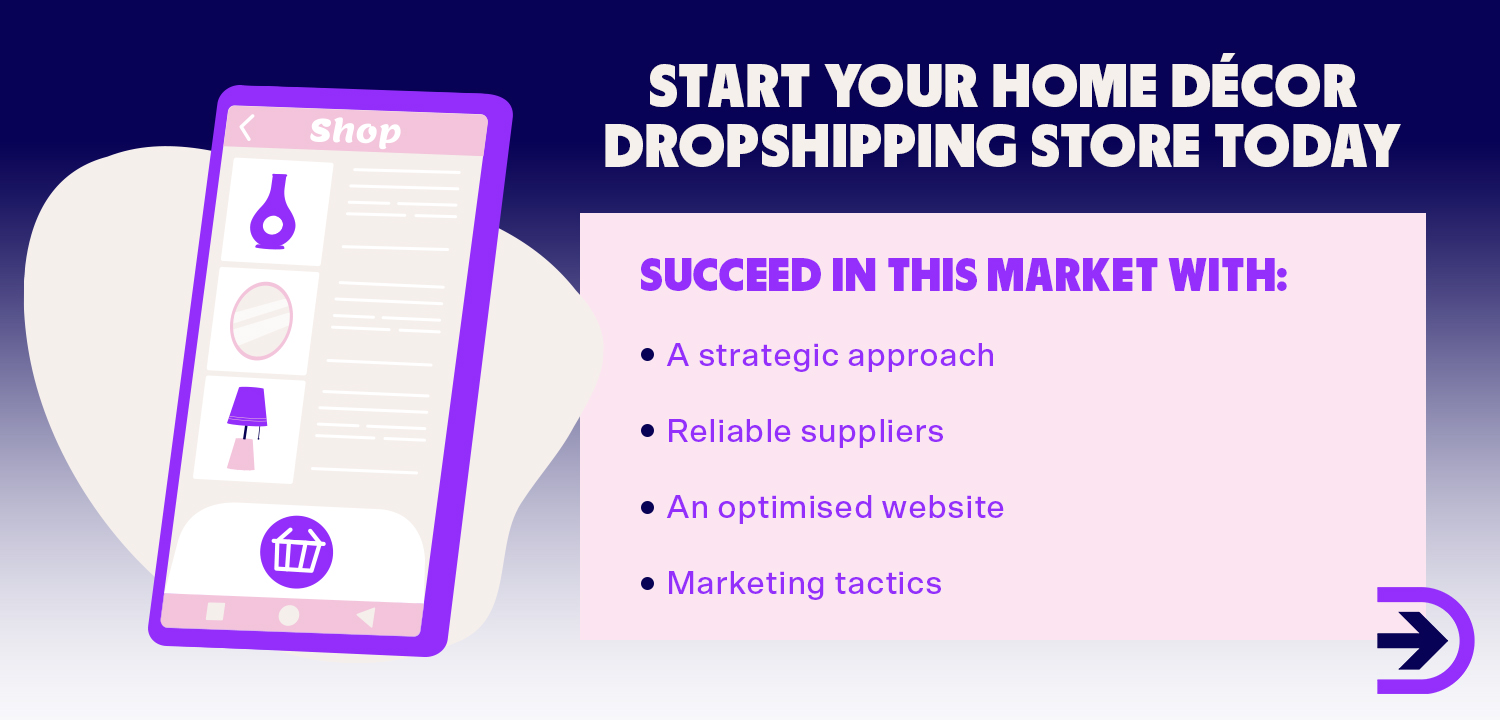
How to Successfully Grow Your Home Décor Dropshipping Business in Australia
Looking for a fun, creative market for your ecommerce business? Look no further than your own home. The Australian home décor market is experiencing significant growth, consistent demand and high revenue potential, driven by rising consumer interest in flexible, optimised and enhanced living spaces. Help your customers find their perfect home aesthetic with a variety of wholesale home décor products and accessories, and help your business grow and scale with the power of dropshipping.
In this blog we’ll examine the cosy home décor market in Australia and show you how to develop your own online home decoration dropshipping business, from inception to launch. We’ll also provide you with the latest tips, tricks and insights, giving you the ideal head start in this popular market.
Understanding the Australian market for cosy home décor
As a consequence of the COVID-19 lockdowns, many consumers were forced to spend significant time at home, whether they were at leisure or at work. This led to a surge of interest in home décor and renovation, DIY, home goods and interior decorating as consumers sought to create flexible work/living spaces that still reflected their personal taste. As attitudes towards work from home continue to shift, the demand for functional and high-quality products continues to rise. In Australia, the home décor market generated a revenue of USD $8,708m in 2024, and is expected to reach a market value of $17,654 by 2030, with a compound annual growth rate of 12.7 per cent from 2025-2030.
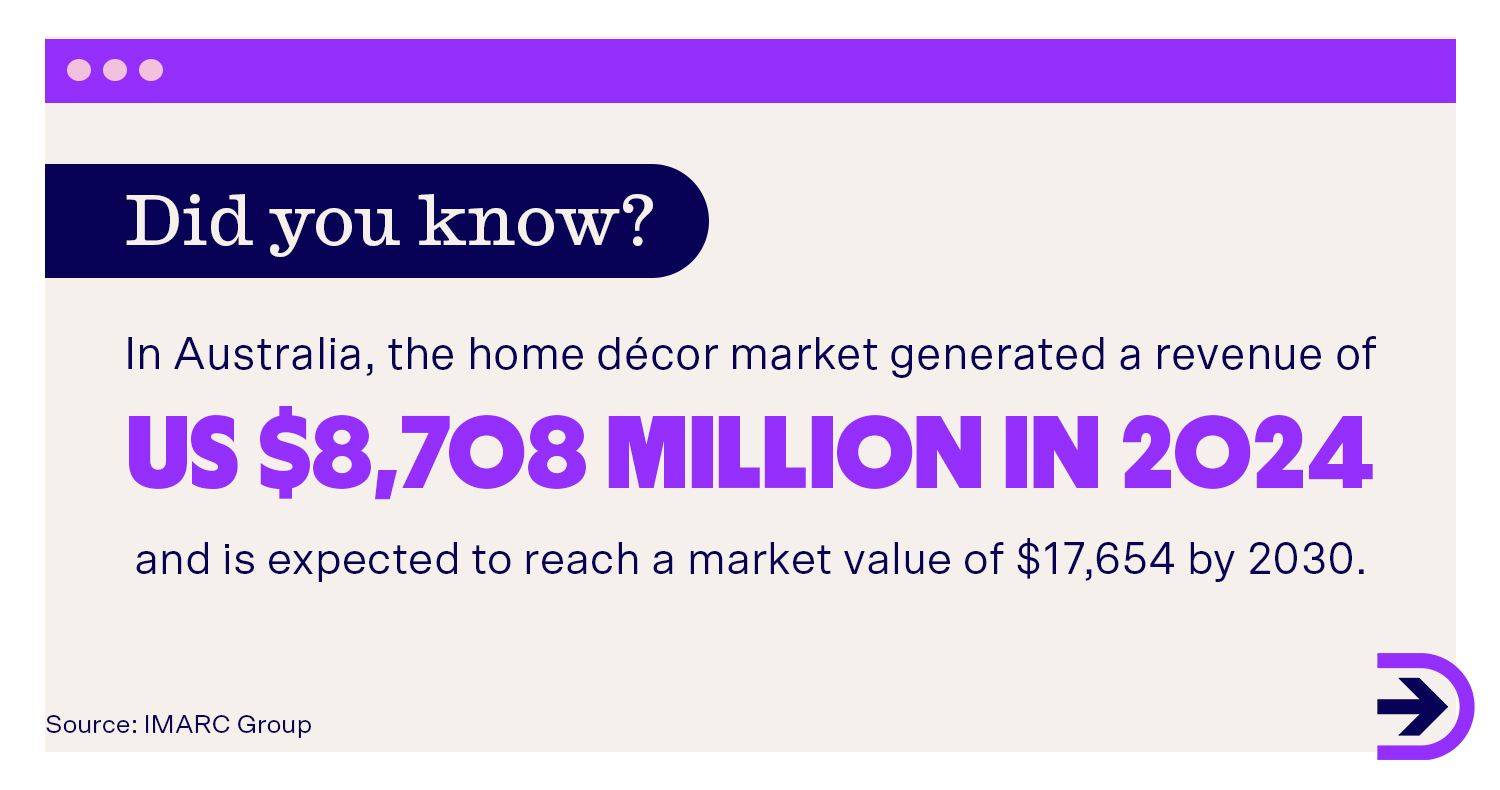
Furniture and home décor used to rely heavily on brick-and-mortar stores, but consumers are increasingly comfortable buying these pieces from online retailers. For starters, industry leaders like IKEA and Temple & Webster have helped build consumer trust in online furniture purchases. Secondly, online stores are able to offer more variety and more competitive pricing. Instead of driving to multiple stores in search of bargains, shoppers can visit an online department store such as Factory Buys and find everything they need to fully furnish a home in one place. Many consumers are feeling the pinch of inflation, causing them to adjust their buying behaviours. 90 per cent of consumers compare prices across different platforms before buying elsewhere, and more shoppers overall are swapping their favourite brands for cheaper alternatives or hunting down discounts, rewards, and other loyalty programs prior to purchasing.
Housing costs are rising, but spaces are getting smaller. This has driven high demand for compact, multifunctional furniture and décor. Additionally, as many people cannot afford to buy a home but still want customised spaces, there is a demand for affordable and temporary decorative accents for renting apartments - pieces that can be easily installed and removed without damaging the existing property. Smart décor has also taken centre stage, introducing pieces that can be customised from anywhere in the home, straight from their phones.
For current style trends, here’s the latest insights from around the web:
-
The Pantone colour of the year is Mocha Mousse, described as a soft brown with a rich neutrality. This reflects current trends towards earthy tones, bringing classic, warm colours into the home.
-
Vintage and retro are, once again, making a comeback. While some homeowners embrace these styles for their rich history and charm, others are taking advantage of a more affordable, more sustainable second-hand marketplace. Mid-century modern, art deco and 70s style pieces are particularly popular.
-
In contrast to the minimalist “millennial grey” styles of recent years, homeowners are swinging towards warm minimalism - a style focused on natural materials and uncluttered décor, but enhanced with cosy elements such as soft fabrics and warm mood lighting.
-
Consumers increasingly value personalisation, both in marketing and in the products they buy. Print on demand (POD) dropshipping services fulfil this demand by offering printing services for a variety of products, including home décor. This growing industry is an excellent opportunity for ecommerce businesses that want to provide a variety of customisable products but don’t have the resources for product customisation.
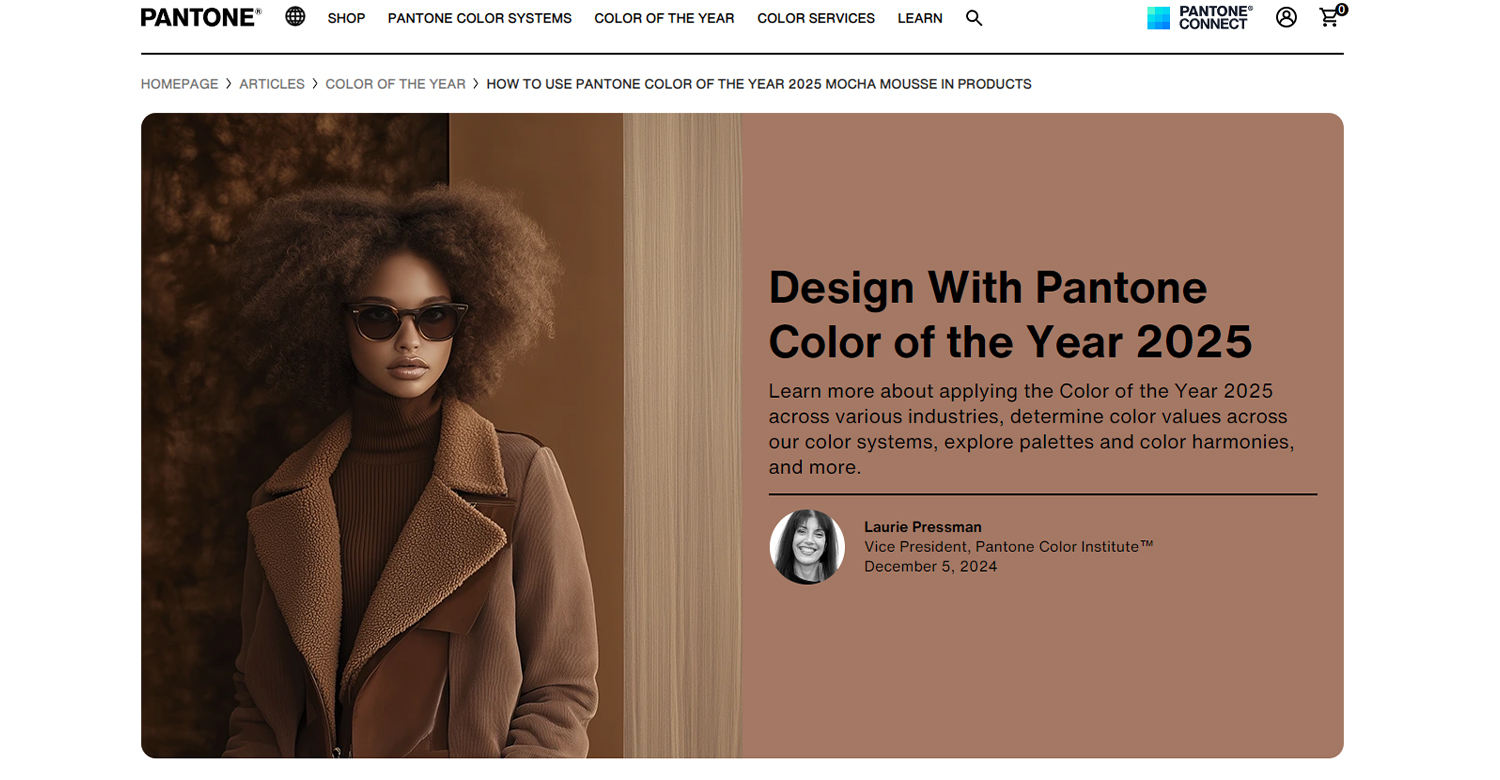
Establishing your brand identity
Establishing your brand identity in the home décor business is, in many ways, the same as any other business. However, unlike other dropshipping businesses such as variety stores, there is an emphasis on aesthetics, lifestyle, and emotional connections. The home is a deeply personal space. When decorating these spaces, consumers will be drawn to brands that reflect their individual values, goals and lifestyle choices. It’s essential for home décor dropshipping businesses to establish a strong brand identity to reach these customers.
Business name and logo design
Your business name and logo are the first things customers will see about your business, which is why it’s important to nail these branding aspects.
The right business name makes your brand easy to find, recognise, and recommend, no matter what you sell. Choosing the right name from the start will also save you money over time. A brand refresh can cost a business between $30,000-50,000, and can significantly impact your SEO strategy. The right business name is SEO-friendly, relevant to your products, and easy to remember. For more information on choosing the perfect business name, you can view our blog “8 Tips for Choosing the Perfect Dropshipping Store Name”.
Regarding logos, 75 per cent of customers recognise a brand solely by their logo. This instant recognition is crucial for brand awareness and even increases your profits, with businesses that consistently use their logo across platforms seeing a 23 per cent increase in revenue. The perfect logo encompasses a brand’s values, its target audience, and its unique tone. If you can’t afford to hire a professional designer or you’re inexperienced with design, there are plenty of tools you can use to help design the perfect business logo, such as Canva and Adobe Express.

Brand voice and messaging
Your brand voice is the distinct personality and tone that your brand uses for all its communications. From your social media posts to your landing pages, your brand voice needs to be consistent across all channels. Consumers report that content originality is a key factor when identifying their favourite brands, and your brand voice forms part of this. Forming a brand voice involves performing market research to examine your target audience and determine their personalities, common interests and shared vocabulary. Most brands will fall under the 12 brand archetypes: you can use these as a template for your own brand voice.
Brand guidelines
Having set brand guidelines is incredibly important, as it sets the tone for all of your communications. They are an invaluable tool for designers, content writers, and other members of your marketing team. These guidelines should cover all aspects of your branding including fonts, brand colour palettes, tone of voice, prohibited phrases or images, and more.
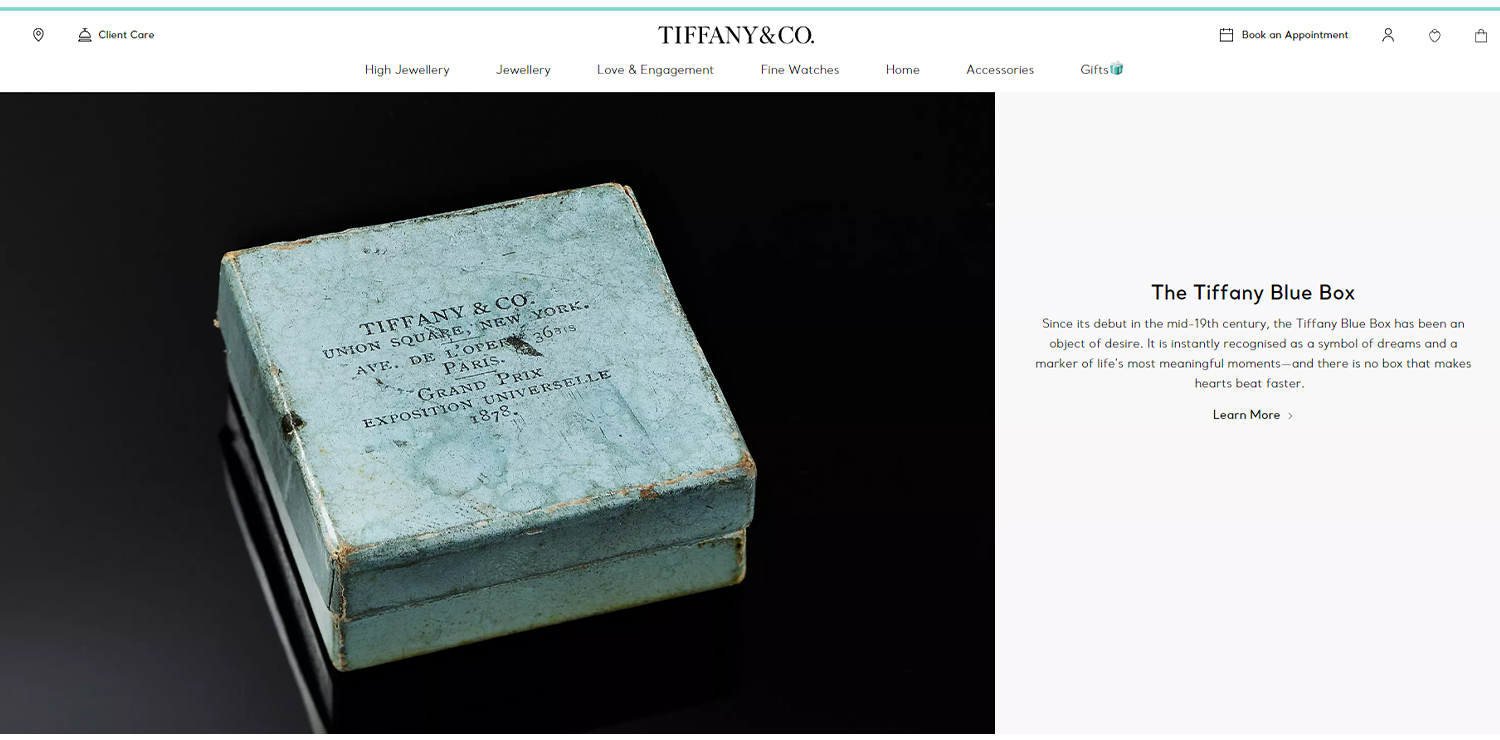
For a prime example of why this matters, look no further than Tiffany & Co. In 1845, the company published their first Blue Book - a direct-mail catalogue and the first of its kind to introduce fine jewellery to American homes. The book’s colour, a light-medium robin egg blue, was later registered as a colour trademark and named Tiffany Blue. This colour is an iconic piece of Tiffany & Co’s branding. Blue is often associated with feelings of calm, trust, and stability. Additionally, as Tiffany jewellery is often gifted during times of celebration, the Tiffany Blue has become intertwined with feelings of joy and reverie.
Rae Dunn pottery is another example of the importance of consistent brand aesthetics. The brand is infamous on social media for being a Millennial favourite, and are easily identified by their unique font.
For more information about building a strong brand identity, check out our blog on branded dropshipping.
Product selection for cosy and budget-friendly home items
To help get you started, here are some cosy and budget-friendly home décor options that you can sell on your dropshipping store:
-
Pillow and couch covers
-
Blackout curtains
-
Throw blankets
-
Fairy lights
-
Multifunctional furniture/storage
-
Artificial plants and decorative planters
-
Washable rugs
-
Wall art
-
Peel and stick tiles/contact paper/wall stickers
-
Cable hides/organisers
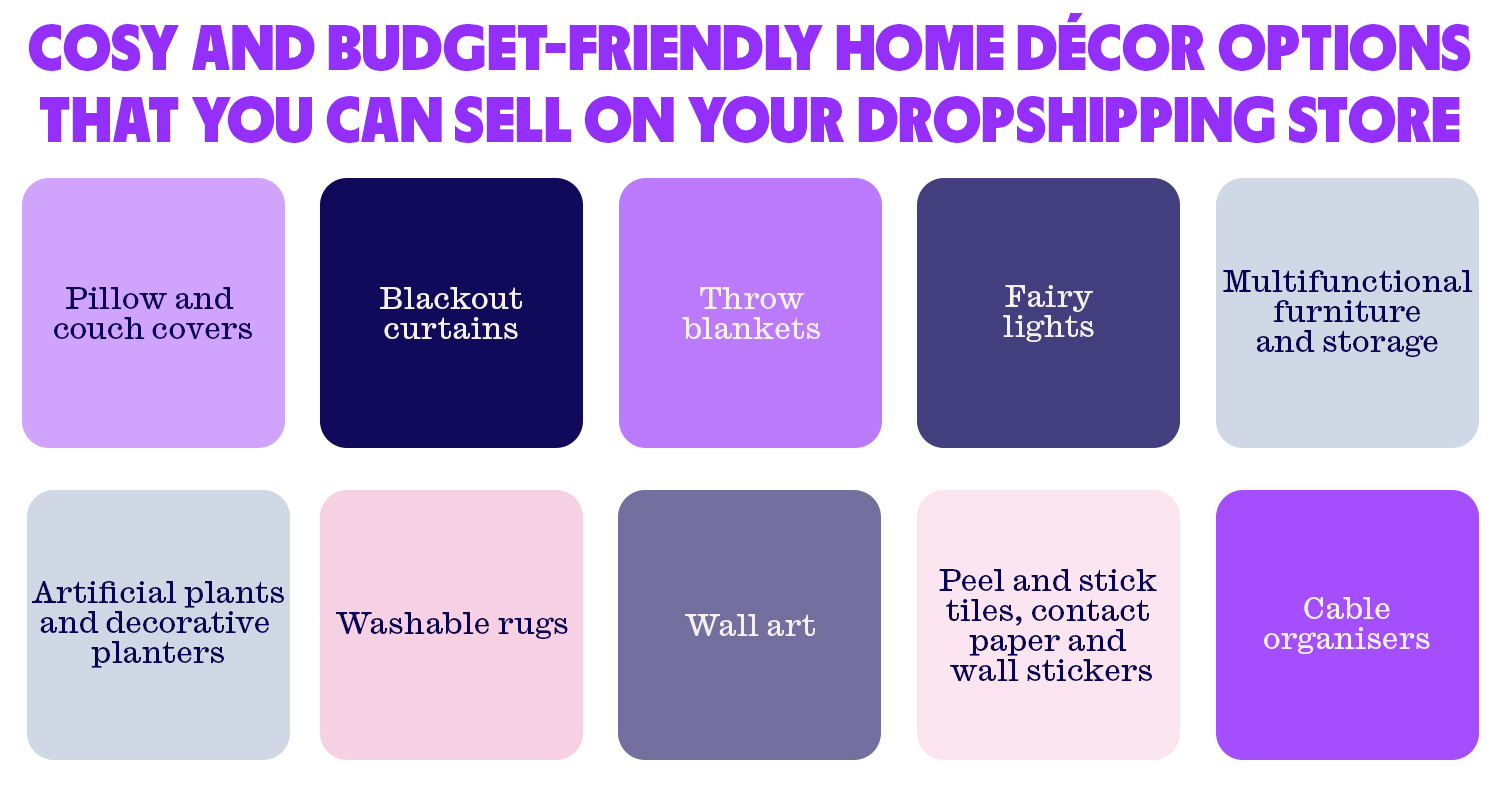
Marketing and growing your home décor dropshipping website
Building a beautiful home décor website is just the first step. Driving traffic and converting visitors into customers is where the real work begins. From social media engagement and influencer collaborations to SEO and paid advertising, a multi-channel approach will help you sell products to the right audience. In this section, we’ll explore the most effective ways to promote your home décor store, increase brand visibility, and drive sales.
Website optimisation for Australian shoppers to boost conversion rates
For effective SEO, you’ll want to optimise your website for local users. One of the best ways to do this is to use a .au domain. To buy a .au domain, you’ll need to provide a physical business address, located in Australia, and you’ll also need an Australian Business Number (ABN) or an Australian Company Number (ACN).
Next, localise your content. This means creating content specific to your audience in Australia. This might involve focusing on local keywords, catering to local weather and seasons, or you can even create specific landing pages for each state or major city.
Finally, have a local link-building strategy. This means, whenever you use backlinks in your content, try to find sources that are local to the area. This extends to any collaborations you do - try to find local influencers, experts and other businesses.
SEO strategies for home décor businesses
Use local slang and spelling. For example, an Australian shopper looking for bedding is not going to look for a duvet, but they may be looking for a doona. You’ll also need to keep in mind localised spelling. Australia generally uses British spellings (like colour, labour and optimise) over American English spellings (like color, labor and optimize).
As a home décor retailer, you’ll also want to be knowledgeable about industry specific terms for each of your home décor product categories. For example, your target audience may be looking for a specific interior design style, so it’s important for you as a seller to understand the difference between a mid-century modern sofa and a contemporary sofa, or rustic vs coastal décor. You’ll also want to familiarise yourself with key materials and their differences (such as types of wood) and product-specific information customers might want to know (such as thread count, lumens, or pile height).
When choosing your keywords, look for missed keyword opportunities. Aim for keywords that have high volume and high buying intent but low competition. For example, you might not have a lot of hits with “farmhouse wall art”, but you could have better luck with “buy modern farmhouse wall art”.
Above all, remember that you’re writing for people, not search engines. Avoid stuffing your content with irrelevant keywords for Google’s sake - focus on creating high-quality, accessible and informative content.
Leveraging social media for visual marketing
Great visuals are important for lots of products, but especially furniture and décor. Customers want to see what a product looks like before committing to their purchase. There’s additional pressure for home décor and furniture: both are going to be consistently on display in the customer's home, and furniture often comes with a high price tag. Therefore, it's important for retailers to show their products as much as possible.
In addition to product photos, businesses can leverage social media for visual marketing. 73 per cent of consumers say a brand's social media presence influences their decision to buy its products or services. Videos are particularly important: 84 per cent of video marketers say video has directly increased sales.
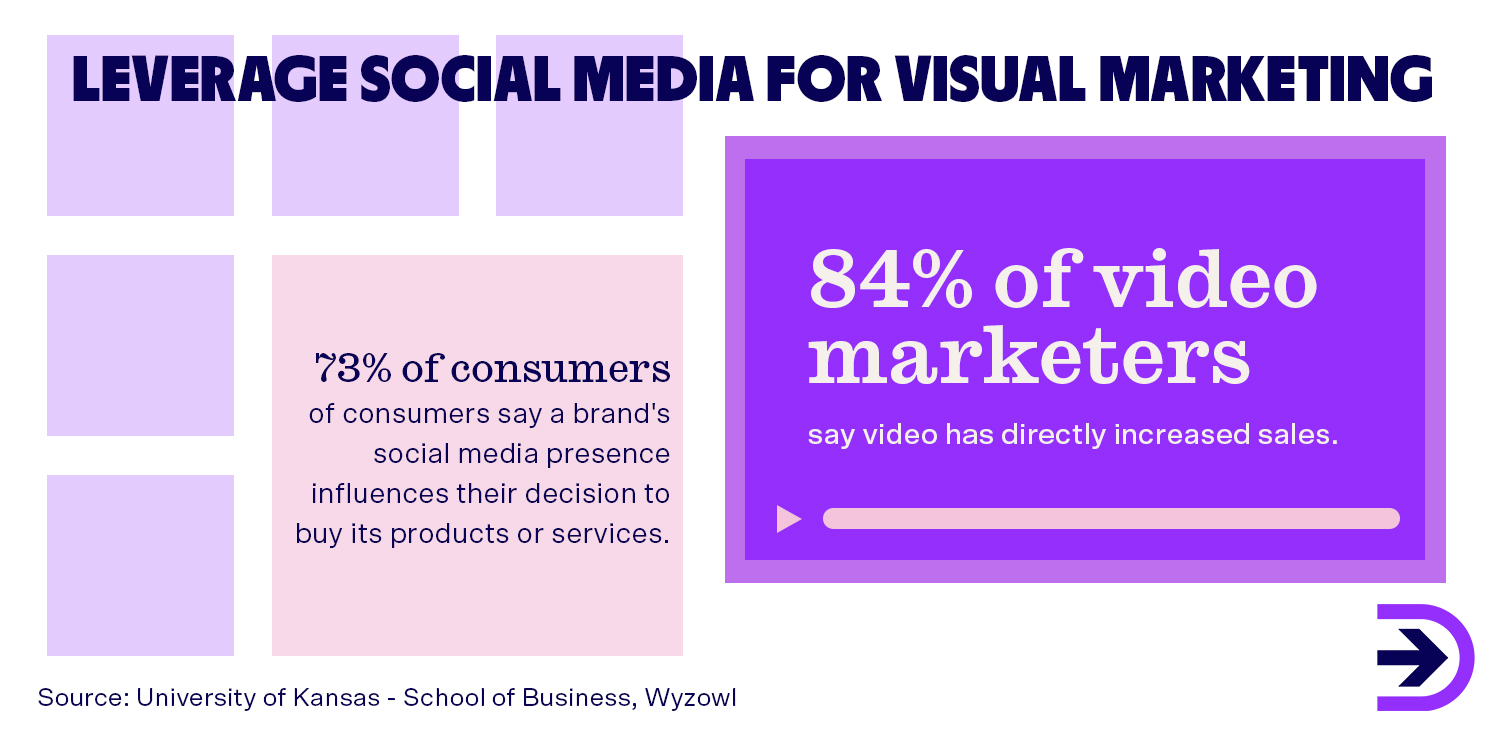
Video is also becoming a major part of online searches. Search results with video thumbnails now make up 30 per cent of all organic SERPs. Additionally, younger consumers are using social media platforms as search engines, to the point where Google is losing its cultural status as a verb. Over 40 per cent of Gen Zers say they prefer TikTok over Google, especially for product reviews, recommendations and how-tos.
The benefits of using social media for visual marketing are multiple.
-
It increases brand visibility and reach, and fosters engagement.
-
Customers can share their positive experiences with your brand. Encourage them to share them visually with photos or video!
-
Social media can give you valuable insights into customer behaviour, trends, common complaints and other insights, helping you make data-driven decisions.
-
There is a high return on investment, especially when using user-generated content (UGC) campaigns.
Influencer collaborations in the home décor space
Influencer marketing is an excellent way to showcase your home décor products and connect with your target audience. Home and lifestyle influencers have built engaged audiences who trust their recommendations, making them valuable partners for promoting your dropshipping products. 48 per cent of consumers look to influencers for product recommendations and 63 per cent agree they are more likely to purchase from a brand that an influencer they trust has recommended.
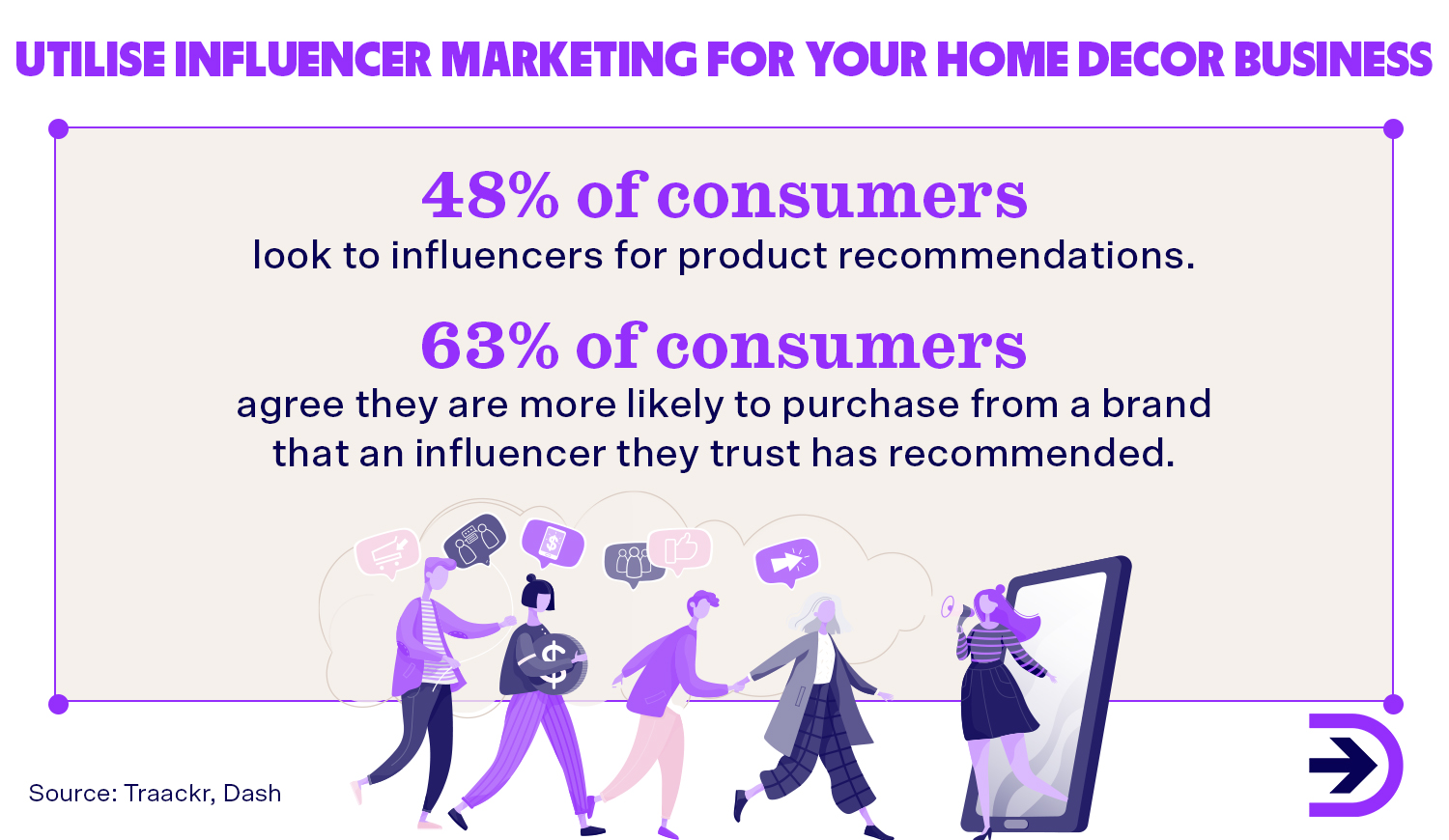
Start by identifying influencers whose aesthetic aligns with your brand. Look for content creators on Instagram, TikTok, and Pinterest who showcase home styling, DIY projects, or interior design tips. Micro-influencers (with 10k-99k followers) often have highly engaged communities and can be more cost-effective than larger influencers. Effective collaboration strategies include product gifting, sponsored posts, unboxing videos, and discount code partnerships. You can also leverage user-generated content by encouraging influencers to share styled photos or videos featuring your products. This not only drives traffic but also provides authentic social proof that can be repurposed across your marketing channels.
Email marketing tailored to lifestyle and trends
Email marketing is still the most effective marketing channel for 44 per cent of marketing professionals, and it can be incredibly effective for your home décor brand. It is a budget-friendly solution that can be easily personalised, automated and targeted, reaching your audience at the perfect time. To stand out in crowded inboxes, your email campaigns should align with lifestyle trends and seasonal décor inspirations that resonate with your audience.
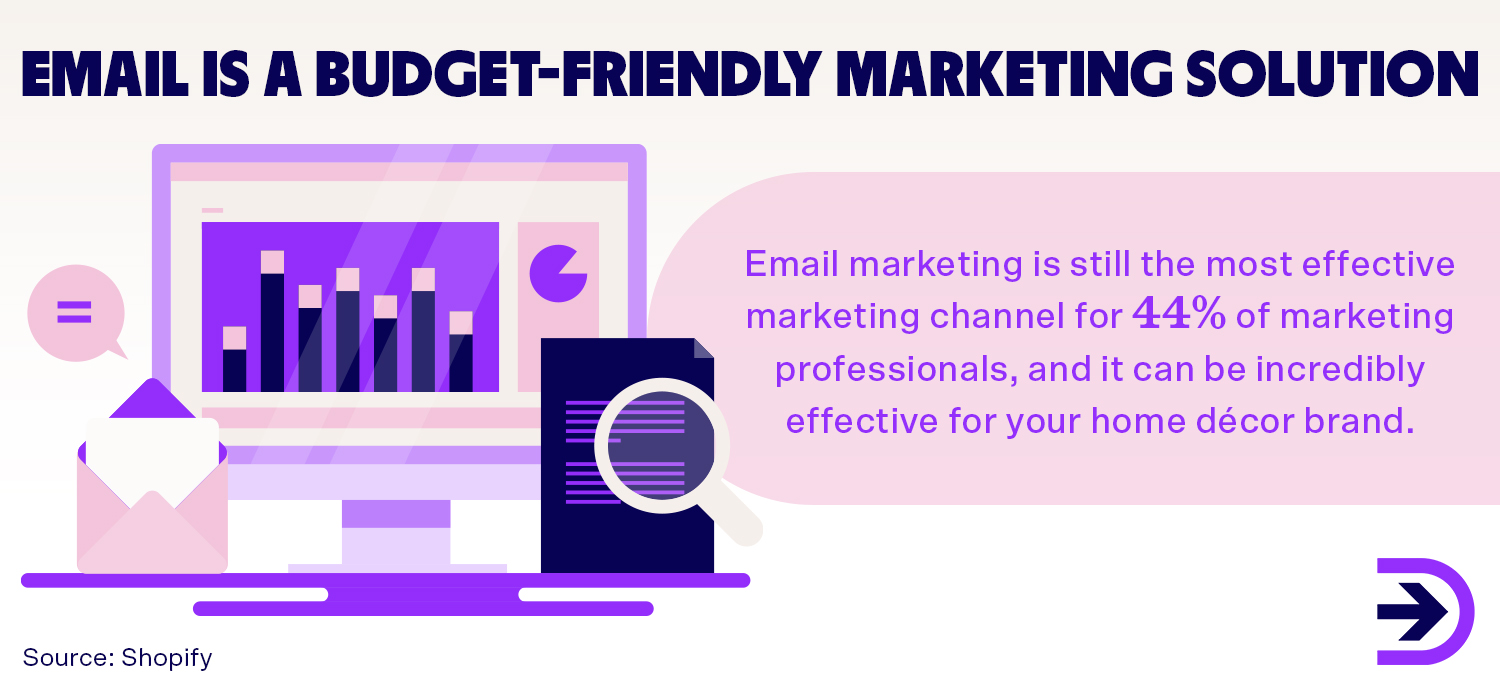
Start by segmenting your email list based on customer interests, previous purchases, and browsing behavior. This allows you to send personalised recommendations, such as trending home styling tips, curated product collections based on past purchases, and exclusive discounts on items that match their aesthetic preferences. Using automation, you can set up welcome sequences for new subscribers, abandoned cart reminders for hesitant shoppers, and post-purchase emails with styling suggestions or complementary product recommendations. By delivering relevant, trend-driven content, you can build stronger customer relationships and increase conversions over time.
Content marketing through blogs and video
Content marketing is a powerful way to attract and engage customers in the Australian home décor dropshipping market. By creating valuable and inspiring content, you can establish your brand as a trusted authority while driving organic traffic to your store.
Blogs can be used to educate your audience, keep them informed of current trends and seasonal changes, share powerful brand stories, and showcase your products. Regularly posting content also helps your long-term SEO strategy. By continually adding valuable content to your website and encouraging user engagement, you’ll signal to search engines that your site is popular, authoritative, and valuable for SERPs.
Videos are another effective content format, especially on platforms like TikTok, Instagram Reels, and YouTube. Create visually appealing content such as product showcases, before-and-after room transformations, and styling tutorials. Short-form videos with engaging hooks tend to perform well, capturing attention and encouraging shares.
PPC advertising on Google and social platforms
Pay-per-click (PPC) advertising is an advertising model where businesses pay each time a user clicks on their ad. Google Ads is perhaps the most well-known platform, but many social media sites also use PPC advertising such as Meta Ads, LinkedIn Ads, and TikTok Ads Manager. Where content marketing and other organic strategies are great for long-term goals, PPC advertising is incredibly effective for short-term campaigns, precise targeting, and converting bottom-of-funnel traffic. Visitors that arrive on your website through PPC campaigns are 50 per cent more likely to make a purchase than organic visitors.
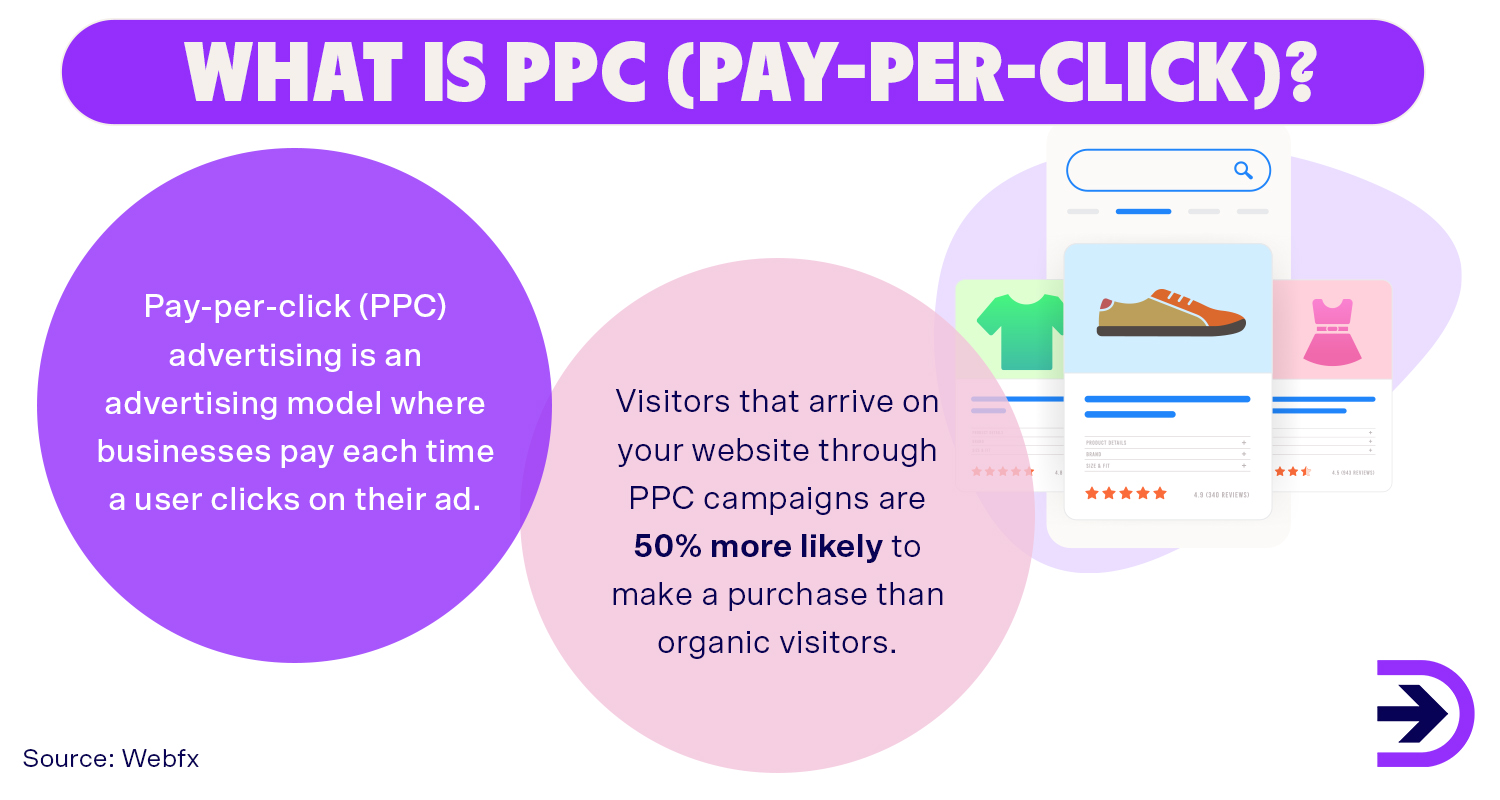
Budgeting for PPC is easier than you think. For starters, you only pay when someone clicks on your ad. You can allocate a flexible budget for PPC campaigns, and easily grow or reduce the amount depending on your performance. Speaking of performance, PPC ads are easy to track and measure with real-time data, especially using platform-specific tools such as Google Ads and Google Analytics. The data collected from these campaigns can then be used to inform future campaigns and strategies.
Customer engagement through reviews and feedback
Reviews and feedback are important for ecommerce businesses. 77 per cent of shoppers specifically seek out websites that contain reviews and feedback. 74 per cent say that they are a key way they learn about new products, and 93 per cent say this content impacts whether they purchase the product.

Customer reviews are especially relevant for home décor brands because they’re one of the best ways to showcase your products in an actual home. They can demonstrate your product’s versatility, provide inspiration for other potential buyers, and show which styles the décor matches. It encourages your customers to imagine your product in their ideal lifestyle, as well as providing relevant social proof. They can also provide valuable data to improve the customer experience.
Community building via local events or online groups
Visit any social media website and you’ll find hundreds of accounts, forums and groups dedicated to interior design. These groups often revolve around specific home décor styles (such as minimalism or mid-century modern), design tips and advice, or inspiration. Some groups even revolve around specific stores, brands, or replica pieces. These groups can inform your content marketing strategy with unique customer insights. You can also use these groups to build your brand awareness and increase brand loyalty through community building. Some methods include:
-
Offering discount codes to high-profile group members.
-
Creating your own public groups around your brand or niche.
-
Sponsoring local events, such as fundraisers or festivals.
-
Sharing informative content from your brand to these groups.
Before engaging with online groups or forums, remember to check their rules and guidelines. Some online spaces are hostile to brand engagement, while others allow brands to post under specific circumstances, such as dedicated posting days or times.
Special offers and loyalty programs for repeat customers
Customer loyalty programs are powerful tools for businesses to encourage repeat purchases and boost customer lifetime value. Loyalty programs offer exclusive perks, discounts or free products in exchange for repeat purchases, and are usually in the form of a points program (such as Flybuys) or a tiered loyalty program based on average spending (such as Sephora Beauty Insider). Loyalty programs are often very effective and have high ROI because brands have a 60-70 per cent chance of selling to existing customers vs a 5-20 per cent chance of selling to new customers, and customer retention costs 5-6 times less than customer acquisition.

While home décor and furniture may not be purchased as frequently as other products, a loyalty program can still be effective. For instance, House offers a VIP rewards program where customers can gain 1 point for every dollar spent and redeem a $20 voucher for every 500 points. Users can also unlock exclusive VIP content with celebrity collaborators, exclusive invites to store launches and pop-ups, and flash discounts.
Analysing and adapting marketing strategies
Success in the Australian home décor dropshipping market depends on continuously analysing and refining your marketing strategies. Start by tracking key performance indicators (KPIs) such as conversion rates, customer acquisition costs, and social media engagement. You can use tools like Google Analytics, Meta Business Suite, and Shopify reports to gain insights into customer behaviour and sales trends.
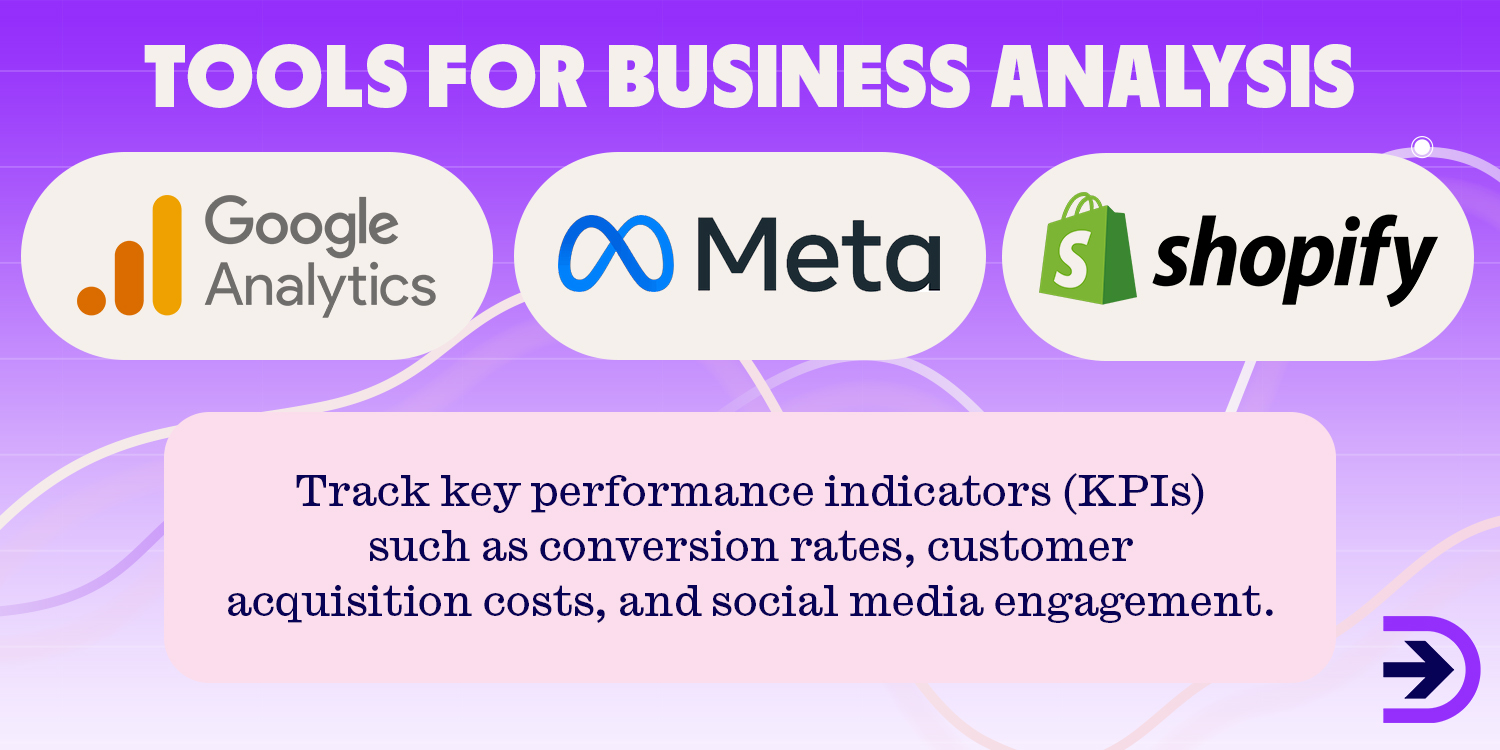
Identify which marketing channels are delivering the best return on investment, whether it's SEO, influencer partnerships, PPC ads, or social media. If a strategy isn’t performing well, experiment with A/B testing, adjusting your ad creatives, refining audience targeting, or shifting budget allocation.
Consumer preferences and trends in home décor evolve quickly, so staying ahead of the latest trends and seasonal demands is crucial. Many social media platforms have tools to track trending audio, influencers and products. Take the time to check these analytics and keep your finger on the pulse. Engage with customer feedback, monitor competitor strategies, and be flexible in your approach to ensure your marketing efforts remain effective and profitable. You may also want to sign up for interior design newsletters, read design books, and follow popular home décor industry experts for the inside scoop.
Scaling your business with additional product lines
Expanding your product range is a strategic way to scale your home décor dropshipping business in Australia. Adding complementary products not only increases your average order value but also attracts a broader customer base. Market research is key. Use customer feedback, social media trends, and competitor analysis to determine what new products have demand. Leverage your existing supplier relationships to source additional items, or explore new suppliers to diversify your supplier inventory.
One of the benefits of the dropshipping business model is a great solution to add new product lines to your store. Using a platform like Dropshipzone, you can simply upload the desired products to your storefront and wait for the orders to come in. You’ll never have to worry about overstocking or inventory management because you only pay for what you sell. If the product doesn’t sell well, demand drops or the season passes, you can easily remove the product from your store. Or, you might find a new niche market that is ravenous for your latest product additions.
FAQs
Is dropshipping home décor products profitable in Australia?
Yes! With the rising demand for stylish, affordable, and convenient home styling solutions, there is a strong market for unique, affordable and trendy décor items. In Australia, the home décor market generated a revenue of USD $8,708m in 2024, and is expected to reach a market value of $17,654 by 2030, with a compound annual growth rate of 12.7 per cent from 2025-2030. Profitability may vary based on factors such as selecting the right niche, pricing products competitively, sourcing quality items, and implementing effective marketing strategies.
How do I find reliable home décor dropshipping suppliers for dropshipping in Australia?
Start by researching Australian-based suppliers via Google, dropshipping directories, or platforms such as Dropshipzone, which connect you with local and international dropshipping partners. You can also reach out directly to wholesalers and manufacturers to negotiate dropshipping arrangements.
What are the best platforms for starting a home décor dropshipping business?
Several ecommerce platforms make it easy to dropship home décor. Shopify is one of the most popular choices due to its user-friendly setup, integrations and strong marketing tools. WooCommerce offers flexibility and customisation, while BigCommerce and Wix are also great options. Choosing the right platform depends on your technical skills, budget, and desired features. You can find out more by visiting our blog, “The Best Ecommerce Platforms for Dropshipping Businesses”.
How should I handle shipping times and customer expectations in Australia?
Since many dropshipping suppliers are based overseas, shipping times can vary. To manage expectations, clearly communicate estimated delivery times on your website and in confirmation emails. Work with Australian-based suppliers when possible for faster delivery times. Offering premium shipping options and providing tracking numbers can also improve customer trust. Proactively addressing any shipping delays and having solid returns policies in place will help maintain a positive shopping experience.
Summary
Dropshipping home décor products in Australia presents a lucrative opportunity for entrepreneurs looking to tap into the growing demand for stylish and affordable home styling solutions. A successful dropshipping program in this market requires a strategic approach, from selecting reliable suppliers and optimising your website to implementing effective marketing tactics. Key strategies include analysing and adapting marketing efforts, expanding your product range, leveraging influencer collaborations, tailoring your email marketing to your buyers, and utilising content marketing through blogs and videos. With creativity, consistency, and data-driven decisions, your home décor dropshipping business can thrive in the Australian market.
